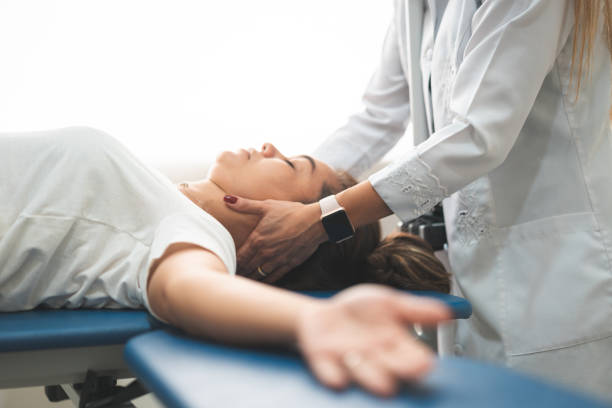Understanding Stroke Treatment: Signs, Types, and Medical Response
Strokes require immediate medical attention and understanding the warning signs can save lives. From recognizing early symptoms to knowing the different types of strokes and available treatments, comprehensive knowledge about stroke care is essential for everyone. Modern medical advances have significantly improved outcomes for stroke patients when proper intervention occurs quickly.

A stroke occurs when blood flow to part of the brain is interrupted or reduced, preventing brain tissue from receiving oxygen and nutrients. Brain cells begin to die within minutes, making stroke a medical emergency that demands immediate attention. Understanding the warning signs, types of strokes, and treatment options can make the difference between life and death, or between full recovery and permanent disability.
What are the Most Common Signs of an Impending Stroke?
Recognizing stroke symptoms quickly is crucial for effective treatment. The most common warning signs include sudden numbness or weakness in the face, arm, or leg, especially on one side of the body. Other critical symptoms include sudden confusion, trouble speaking or understanding speech, sudden trouble seeing in one or both eyes, sudden trouble walking, dizziness, loss of balance or coordination, and sudden severe headache with no known cause. The acronym FAST (Face drooping, Arm weakness, Speech difficulty, Time to call emergency services) helps people remember the most important warning signs.
How Soon Before a Stroke Do Warning Signs Typically Appear?
Warning signs can appear at different times depending on the type of stroke. For ischemic strokes, which account for about 87% of all strokes, symptoms often develop gradually over minutes to hours. However, some people experience transient ischemic attacks (TIAs) or “mini-strokes” days, weeks, or even months before a major stroke occurs. These temporary episodes cause similar symptoms but typically last only a few minutes to hours. Hemorrhagic strokes often have more sudden onset, with symptoms appearing rapidly as bleeding occurs in the brain.
What are the Different Types of Strokes and Their Symptoms?
There are three main types of strokes, each with distinct characteristics. Ischemic strokes occur when blood clots block arteries leading to the brain, causing symptoms like weakness, speech problems, and vision changes. Hemorrhagic strokes happen when blood vessels in the brain rupture, often causing severe headaches, nausea, vomiting, and rapid loss of consciousness. Transient ischemic attacks produce temporary stroke-like symptoms but don’t cause permanent brain damage. Each type requires different treatment approaches, making accurate diagnosis essential for proper care.
What Immediate Actions Should Be Taken if Stroke Symptoms Appear?
When stroke symptoms appear, time is critical. Call emergency services immediately - every minute counts in stroke treatment. While waiting for medical help, keep the person calm and lying down with their head slightly elevated. Do not give food, water, or medication, as swallowing may be impaired. Note the time when symptoms first appeared, as this information is crucial for treatment decisions. If the person is unconscious, check their breathing and pulse, and be prepared to perform CPR if necessary. Never attempt to drive someone experiencing stroke symptoms to the hospital yourself.
What are the Current Treatment Options for Stroke?
Modern stroke treatment varies depending on the type and timing of the stroke. For ischemic strokes, clot-busting medications like tissue plasminogen activator (tPA) can be administered within 4.5 hours of symptom onset. Mechanical thrombectomy, a procedure to physically remove clots, can be performed up to 24 hours after stroke onset in certain cases. Hemorrhagic strokes may require surgical intervention to stop bleeding and reduce pressure on the brain. Rehabilitation therapy, including physical, occupational, and speech therapy, plays a crucial role in recovery for all stroke types.
| Treatment Type | Provider/Facility | Cost Estimation |
|---|---|---|
| Emergency Room Visit | Major Hospitals | $3,000 - $8,000 |
| tPA Medication | Hospital Emergency Dept | $7,000 - $13,000 |
| Mechanical Thrombectomy | Comprehensive Stroke Centers | $40,000 - $100,000 |
| Rehabilitation Therapy | Specialized Rehab Centers | $1,500 - $3,500 per week |
| Outpatient Follow-up | Neurologists/Primary Care | $300 - $600 per visit |
Prices, rates, or cost estimates mentioned in this article are based on the latest available information but may change over time. Independent research is advised before making financial decisions.
Stroke treatment has evolved significantly over the past decades, with new therapies and interventions improving outcomes for patients. Early recognition of symptoms, immediate medical attention, and comprehensive rehabilitation remain the cornerstones of effective stroke care. Understanding these aspects of stroke treatment empowers individuals to respond appropriately during medical emergencies and seek proper care when needed.
This article is for informational purposes only and should not be considered medical advice. Please consult a qualified healthcare professional for personalized guidance and treatment.




